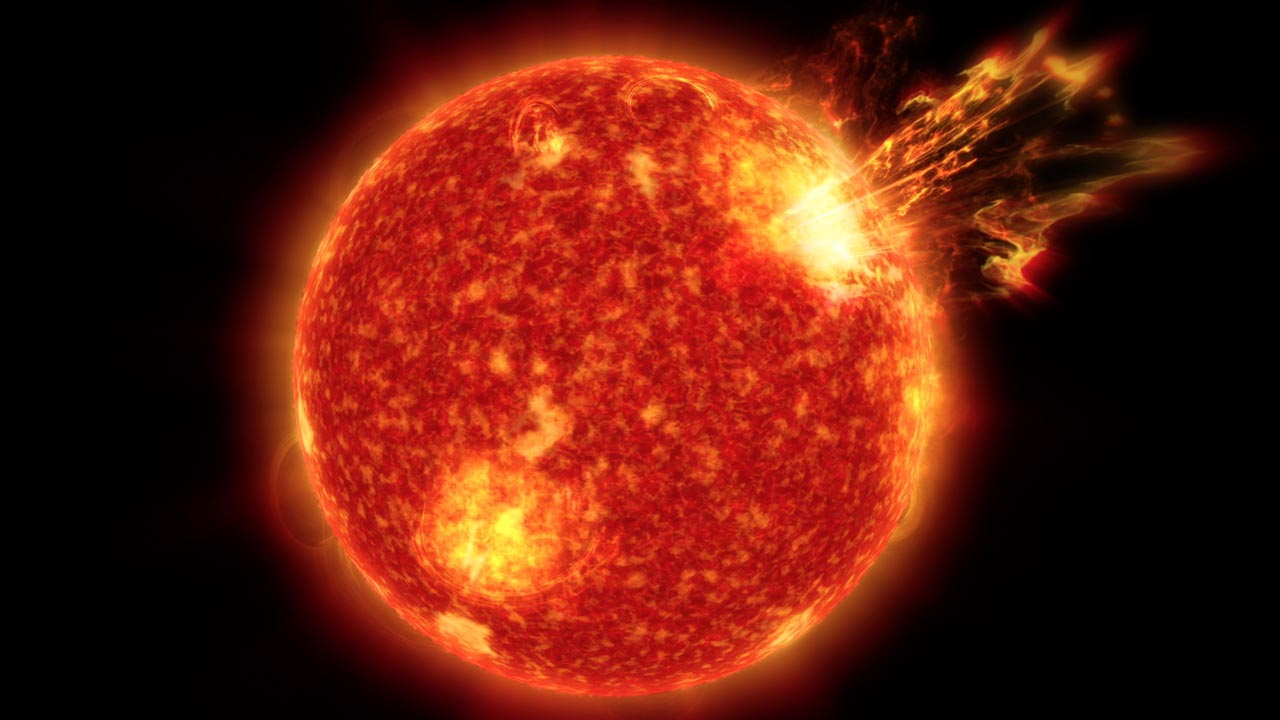How Earth Lost Its Cool

Scientists think solar storms may have been key to warming our planet.
Earth was far different 4 billion years ago. Back then it received only about three-quarters the amount of energy from the sun than it does today. It also lacked gases in its atmosphere that trap heat. These conditions should have made the planet a cold, icy place. But geological evidence shows Earth was warm and that it had liquid water. So what was causing the warmer environment? A team of scientists from NASA may have found the answer. New research suggests powerful solar storms could have provided the energy needed to heat the planet. In the early days of the solar system, the sun’s surface roiled with giant eruptions, spewing enormous amounts of solar material and radiation out into space. Energetic solar particles that slammed into Earth would have altered the chemistry of the atmosphere, resulting in the formation of nitrous oxide, a greenhouse gas some 300 times more powerful than carbon dioxide. The warming of the planet may not have been the only outcome. Scientists say the eruptions also could have provided the energy needed to make complex chemicals such as RNA and DNA that eventually seeded life on Earth. Explore the images to learn more.

The sun produced frequent and intense eruptions around 4 billion years ago that sent giant amounts of radiation and solar material out into space.

Earth's early magnetic field (blue) wasn’t able to prevent solar material (yellow) emitted during these eruptions from reaching the planet.

The constant influx of solar particles would have changed the chemistry of Earth’s atmosphere.

According to researchers, the changes may have allowed the planet to warm up enough to incubate life.
For More Information
See NASA.gov
Credits
Please give credit for this item to:
NASA's Goddard Space Flight Center
Earth photo courtesy of NASA/EPIC
-
Writer
- Karen Fox (ADNET Systems, Inc.)
-
Animators
- Walt Feimer (HTSI)
- Krystofer Kim (USRA)
- Brian Monroe (USRA)
-
Scientist
- Vladimir Airapetian (Sigma Space Corp.)
-
Producer
- Genna Duberstein (USRA)
Release date
This page was originally published on Thursday, June 9, 2016.
This page was last updated on Wednesday, May 3, 2023 at 1:48 PM EDT.
